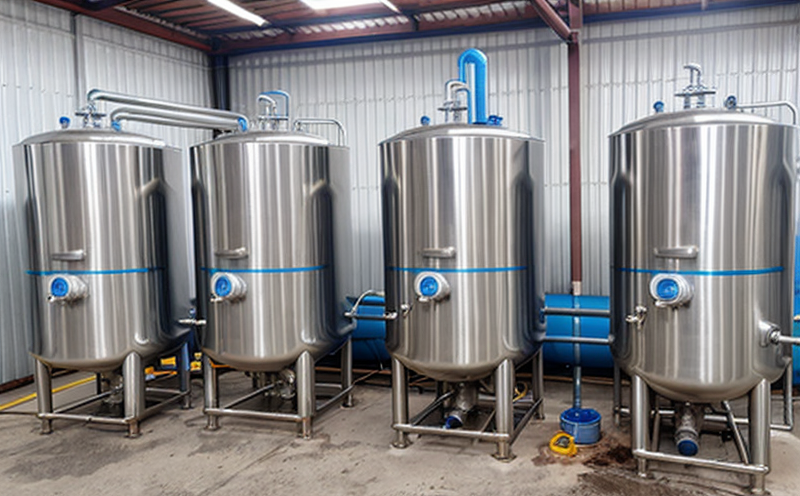ASTM D859 Silica Test in Cooling Water
The ASTM D859 standard provides a method to determine silica content in water, which is critical for ensuring the quality and efficiency of cooling systems. Silica contamination can lead to scaling, reduced heat transfer, and increased energy consumption, all of which are detrimental to industrial processes involving cooling water.
In many industries such as power generation, chemical processing, and HVAC, maintaining optimal silica levels in cooling water is essential for the longevity and efficiency of equipment. Silica forms a colloidal suspension when dissolved in water, making it challenging to measure accurately without specialized techniques like atomic absorption spectroscopy (AAS).
The ASTM D859 method involves several steps: first, filtration of the sample to remove suspended solids; second, acid digestion to convert silicates into silica; and third, measurement using an AAS instrument. This process ensures accurate quantification of free silica, which is particularly important in boiler water systems where even small amounts can cause significant issues.
The significance of this test extends beyond just operational efficiency; it also plays a crucial role in environmental compliance. Many regions have stringent regulations regarding the discharge of wastewater containing excessive levels of silica. By conducting regular ASTM D859 tests, facilities can ensure their effluents meet these standards and avoid potential legal penalties.
Moreover, the test results provide valuable insights for process optimization. For instance, if silica levels are consistently high, it might indicate issues with water sources or treatment processes that need addressing. This proactive approach not only helps in maintaining compliance but also contributes to sustainable practices by minimizing resource waste and reducing operational costs.
The ASTM D859 method is widely accepted across various sectors due to its reliability and precision. It forms the basis for many industry-specific guidelines and can be adapted to suit different water types, including boiler feedwater, cooling tower makeup water, and process waters.
Benefits
- Enhanced Equipment Lifespan: By monitoring silica levels, you can prevent scaling and corrosion, thereby extending the life of your cooling equipment.
- Cost Savings: Reduced maintenance costs due to fewer breakdowns and longer operational periods for critical machinery.
- Compliance Assurance: Ensures that discharged water meets environmental regulations, avoiding potential fines and reputational damage.
- Process Optimization: Provides data to adjust water treatment processes, improving overall efficiency and reducing energy consumption.
Quality and Reliability Assurance
Our laboratory adheres strictly to ASTM D859 standards to ensure the accuracy and reliability of our testing results. We employ experienced chemists and technicians equipped with state-of-the-art equipment to perform these tests under controlled conditions.
The precision and reproducibility of the ASTM D859 method are crucial for consistent results across different samples and batches. Our laboratory uses high-quality reagents and calibrated instruments to minimize errors, ensuring that every test conducted meets or exceeds industry expectations.
We maintain strict quality control procedures throughout our testing process, from sample collection and preparation to final analysis and reporting. This commitment to accuracy and reliability is reflected in the numerous positive reviews and certifications we have received from clients across various sectors.
International Acceptance and Recognition
- American Society for Testing and Materials (ASTM): ASTM D859 is widely recognized in the United States, providing a standard method that is accepted by regulatory bodies.
- European Committee for Standardization (CEN): The method is also used within EU countries as part of harmonized standards.
- International Organization for Standardization (ISO): ISO 9226, which incorporates ASTM D859, ensures compatibility with international norms.





